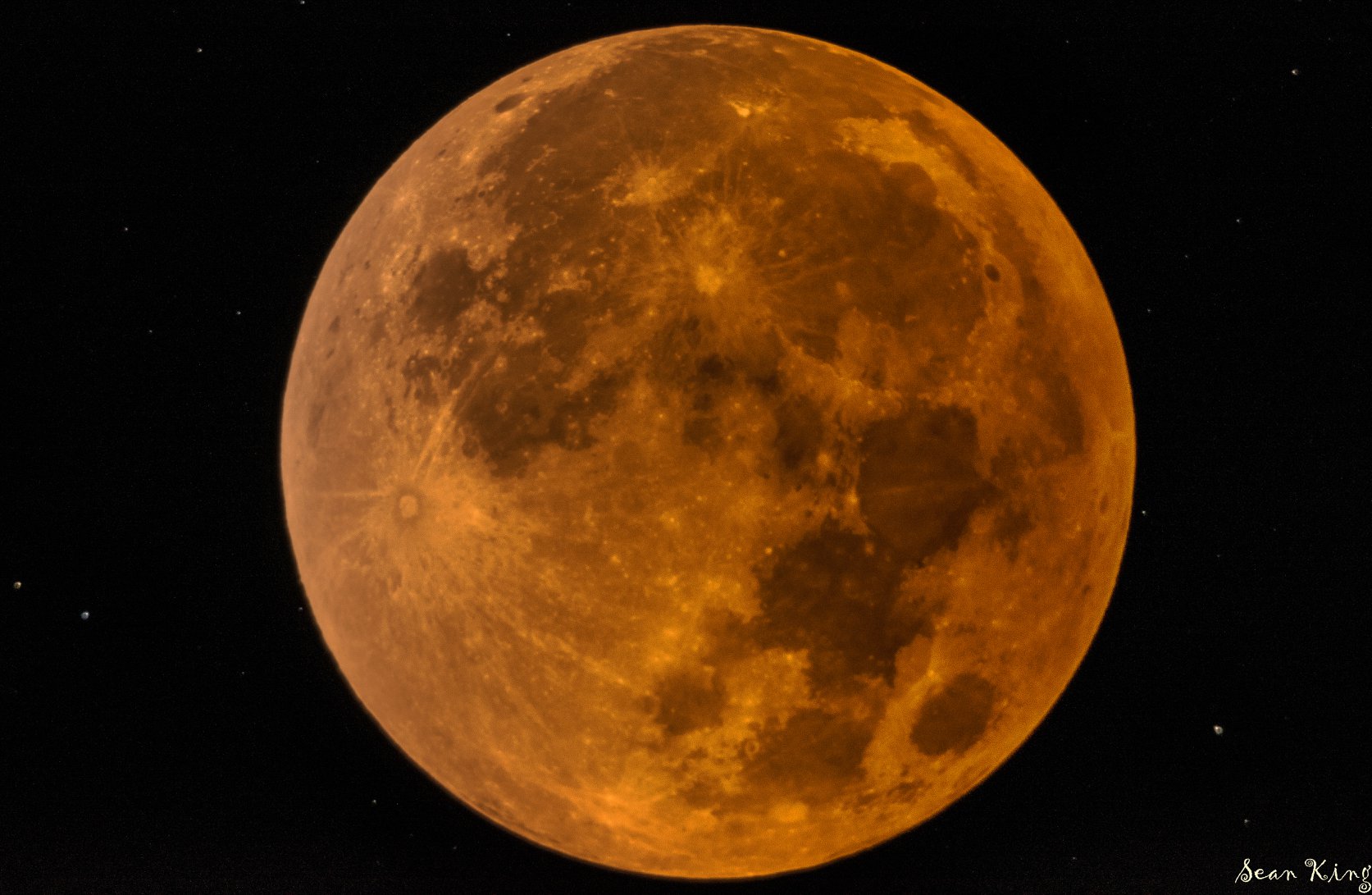
Photograph: Sean King /Facebook
A spectacular lunar eclipse will grace the night skies across much of the Northern Hemisphere tonight, bringing with it many names. “Blood Moon”, “Super Moon”, “Wolf Moon”, and many other adjectives are being used to describe this night site. Tonight at 12:12am ET / 9:13pm PT, the Sun, the Moon, and the Earth will align creating a unique total lunar eclipse. The full moon will also be at its closest point to Earth in its orbit, called perigee. While at perigee, the Moon appears slightly bigger and brighter from our perspective on Earth, so it’s often referred to as a “Super” moon. In January, the full moon is also sometimes known as the “Wolf” Moon or “Great Spirit” Moon – hence the long name for this event.
A lunar eclipse occurs when the Moon passes directly behind Earth and into its shadow. This can occur only when the Sun, Earth, and Moon are exactly or very closely aligned, with Earth between the other two. A lunar eclipse can occur only on the night of a full moon. Unlike a solar eclipse in which its dangerous to stare at the sun, there is no danger associated with watching a lunar eclipse at night. As such, no special eclipse glasses are required to safely watch the Moon.
There won’t be a lunar eclipse like this one until 2021.
As long as Mother Nature cooperates with clear skies, the entire eclipse will also be visible in North and South America, as well as Greenland, Iceland, Ireland, Norway, Sweden, Portugal and the French and Spanish coasts. The rest of Europe, as well as Africa, will have partial viewing before the moon sets. Asia, Australia and New Zealand will miss out. Even Hawaii will be able to watch the event: the total eclipse begins there at 6:21pm, peaks at 7:12pm, and ends at 7:43pm local time.
During a total lunar eclipse, Earth completely blocks direct sunlight from reaching the Moon. The only light reflected from the lunar surface has been refracted by Earth’s atmosphere. This light appears reddish for the same reason that a sunset or sunrise does: the Rayleigh scattering of bluer light. Rayleigh scattering refers to the scattering of light off of the molecules of the air, and can be extended to scattering from particles up to about a tenth of the wavelength of the light. It is Rayleigh scattering off the molecules of the air which provides a typical blue sky.